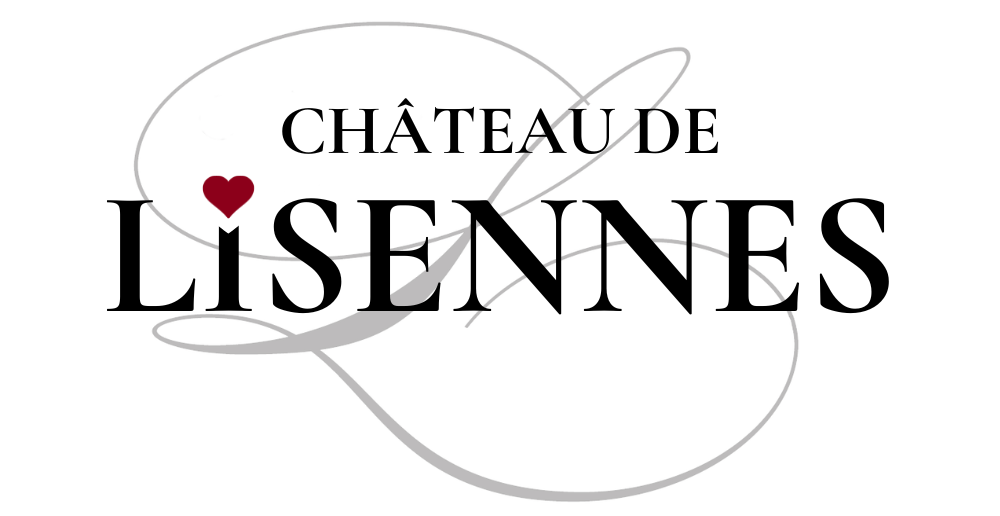FROM PLANTING A VINEYARD AND BORDEAUX HISTORY
Château Lisennes contributed to the great wine-making history of the Gironde in just the same way as the famous “Grands Crus”. It is based on the intrepid men and women who historically settled in the Bordeaux region. The first ten owners of Lisennes were perfect examples of the kind of people who developed wine-making in Bordeaux. They were protégés of the monarchy in the 17th century, then wealthy merchants in the 18th and bourgeois landowners in the 19th. These owners, each in their own way, tell the story of the changes and developments of winemaking in Bordeaux.
In 1938, Jean-Léon Soubie, originally from Béarn, gave new impetus to Lisennes. Continuity is the essence of the vine and wine-making. Today, Soubie’s great-grandchildren, who grew up at Lisennes tend it.
Lisennes is situated on the edge of the vast Entre-deux-Mers plateau, surrounded by valleys, Romanesque churches and monasteries. For two thousand years one has cultivated vines in the Gironde estuary. Ausone’s wine was lauded as long ago as the Gallo-Roman era, Pope Clement V oversaw the vintage at his vineyard in Bordeaux in 1305, and Montesquieu was a wine merchant early in the 18th century.
Lisennes is therefore a small part of the long grape-growing tradition of Bordeaux.
The exact founding of Lisennes is unknown, though there are records of a deed of sale in the year 1260 of “17 règes of vine and trellis situated in the parish of Tresses between the public way and the stream for the sum of 60 Bordeaux sous” with the text telling of the presence of “tall plants” and “vines as high as the trellis” at the property.
 A long line of men and women have contributed to its history. The first recorded owner was Étienne de Baritault, a lawyer at the court of Aydes de Guienne, who acquired it in the early 18th century. This was a period of unparalleled prosperity in the Bordeaux region. His granddaughter, the Demoiselle de Beaumalle, and her husband, the Marquis of Rabar, inherited Lisennes in 1758. Later, Joseph de Rabar sold the estate to Guillaume Bardon, an ennobled bourgeois, and had been a farrier by trade and worked for the gendarmes of the King’s “ordinary” guard. He was sixty years old at the time and built the first known house at Lisennes, living in it for about a decade.
A long line of men and women have contributed to its history. The first recorded owner was Étienne de Baritault, a lawyer at the court of Aydes de Guienne, who acquired it in the early 18th century. This was a period of unparalleled prosperity in the Bordeaux region. His granddaughter, the Demoiselle de Beaumalle, and her husband, the Marquis of Rabar, inherited Lisennes in 1758. Later, Joseph de Rabar sold the estate to Guillaume Bardon, an ennobled bourgeois, and had been a farrier by trade and worked for the gendarmes of the King’s “ordinary” guard. He was sixty years old at the time and built the first known house at Lisennes, living in it for about a decade.
In 1785, as the French Revolution loomed, wine merchant Jean Laporte acquired the property. At the turn of the century, Bordeaux wine experienced a period of increasing economic prosperity. The chateau was renovated again and took on its present form, a chartreuse. Laporte installed an impressive set of railings and wrought iron gate adorned with his monogram (JL), that still stands today.
In the 1850’s some of Bordeaux's wine merchants acquired Lisennes in order to test whether wine traders should invest in land and wine production. The Paris Universal Exposition saw the baptism of the 1855 classification. The Gironde estuary was dotted with vineyards. Outbuildings for wine called “chais” were common, with their thick walls of crushed stone and their beaten earth floors providing a cool temperature and wine-friendly humidity. Lisennes did not escape this trend.
Louis Chasseriaud, who had made his fortune in Pulo Penang, Malaya, bought the property in 1861, grubbing up trees and replacing them with vines. Mr Chasseriaud then got into financial difficulty in 1876 that resulted into a forced sale and Madame Ducoux, a banker’s wife, then bought the property described at the time as “the largest, handsomest and best cultivated in Entre-deux-Mers”. William Taylor, an agricultural engineer, acquired it in 1899. A 23 year old of English origin he had received an inheritance from an American aunt ! This was the first time that there was any mention of the business at the château, and a register of production was kept from 1899 to 1925. Having run the estate for twenty-nine years through WW1 and the depression, William Taylor eventually sold Lisennes to Jean-Léon Soubie on 31 August 1938.
Jean-Léon Soubie and his wife, Marie-Gabrielle, acquired 82 hectares of land, a stable, two grey horses, etc. The presence of several existing vats shows that William Taylor was making wine. For the first time, the Soubie family made its mark on Lisennes!
.


















